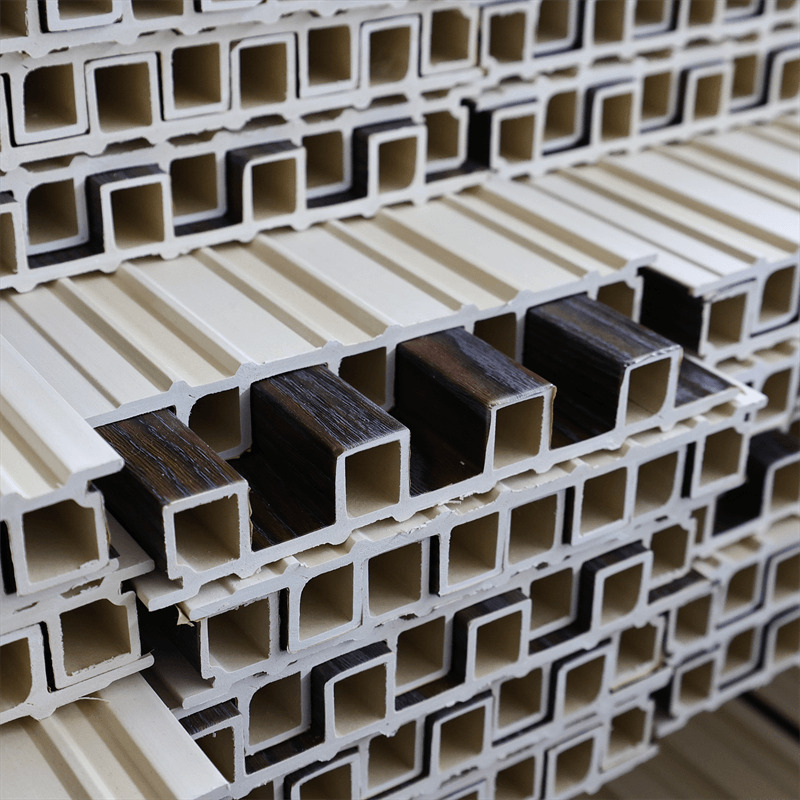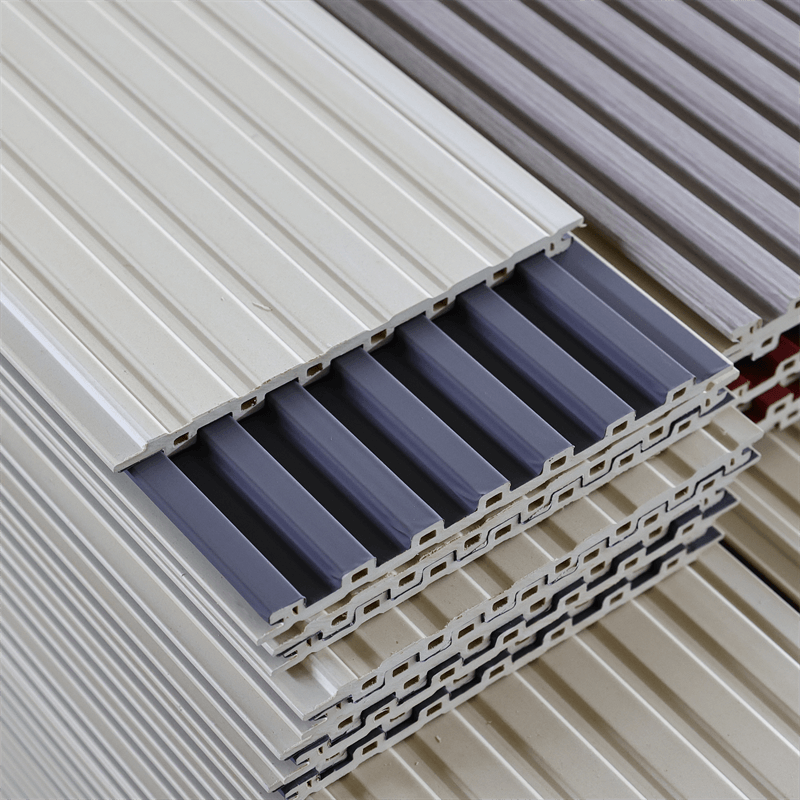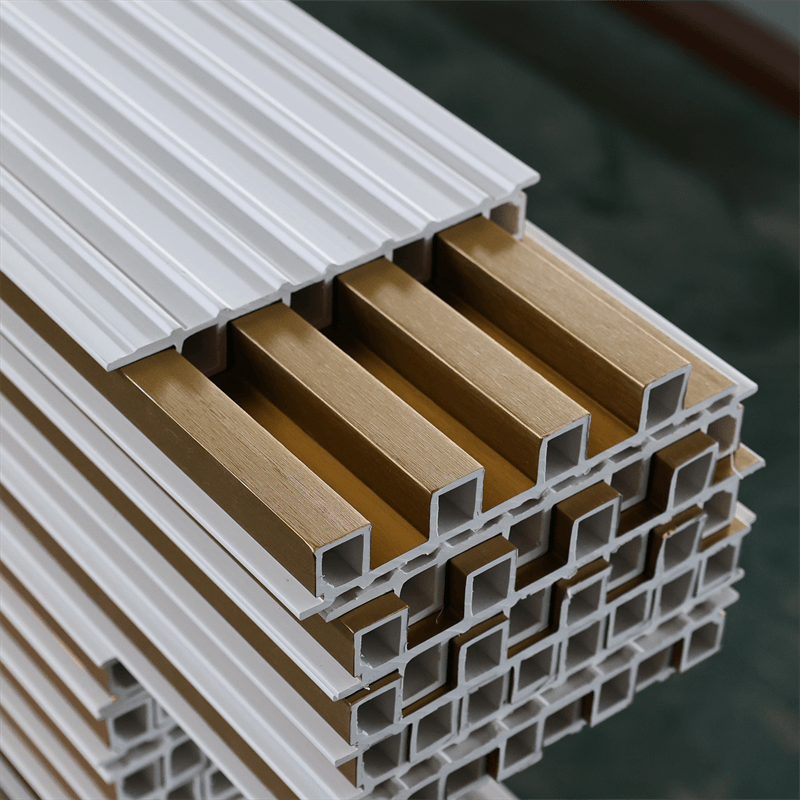When it comes to choosing building materials, durability is a key factor to consider.
In recent years, WPC (Wood-Plastic Composite) wall panels have emerged as a popular choice due to their remarkable durability.
This essay delves into the durability of WPC wall panels, highlighting their resistance to environmental factors, longevity, low maintenance requirements, and cost-effectiveness.

I. Resistance to Environmental Factors:
WPC wall panels are designed to withstand a wide range of environmental factors, making them highly durable in various climates and conditions.
One notable advantage is their resistance to moisture.
Unlike traditional wood panels, WPC panels do not absorb moisture, preventing issues such as warping, rotting, or fungal growth.
This moisture resistance is particularly beneficial in areas prone to high humidity or moisture exposure, such as bathrooms and kitchens.
Furthermore, WPC panels are highly resistant to UV radiation. They are engineered to withstand prolonged exposure to sunlight without fading or discoloration.
This UV resistance ensures that the panels retain their aesthetic appeal and structural integrity over time, even in outdoor applications or spaces with significant sunlight exposure.
Additionally, WPC panels are resistant to temperature fluctuations. They do not expand or contract significantly with changes in temperature, reducing the risk of cracks or deformations.
This feature makes them a suitable choice for regions with extreme temperature variations.
II. Longevity:
Durability is closely linked to the longevity of building materials, and WPC wall panels excel in this aspect.
Due to their composition of wood fibers and polymer resins, these panels are highly resistant to wear and tear, ensuring a long lifespan.
They can withstand heavy impact, scratches, and abrasions, making them ideal for high-traffic areas or spaces where the walls may be subject to accidental bumps or contact.
Moreover, the structural stability of WPC panels contributes to their longevity.
The combination of wood fibers and polymers creates a robust and stable material that can endure years of use without significant degradation.
This longevity factor is particularly beneficial for long-term investments, such as commercial buildings or residential properties.
III. Low Maintenance Requirements:
One of the key advantages of WPC wall panels is their low maintenance requirements, which contribute to their long-lasting durability.
Unlike traditional wood panels, WPC panels do not require regular staining, painting, or sealing to maintain their appearance and structural integrity.
The inherent properties of the materials used in WPC panels eliminate the need for time-consuming and costly maintenance tasks.
Cleaning WPC panels is a simple process, usually requiring only water and mild detergent.
The smooth surface of the panels makes them easy to clean, and any stains or marks can be effortlessly wiped away.
This low maintenance characteristic not only saves time but also reduces the need for additional expenses associated with maintenance materials and labor.
IV. Cost-Effectiveness:
The durability of WPC wall panels translates into long-term cost-effectiveness.
Although the upfront cost of WPC panels may be slightly higher compared to some traditional materials, the investment pays off over time.
The extended lifespan and low maintenance requirements of WPC panels result in reduced repair and replacement costs, making them a financially prudent choice.
Furthermore, WPC wall panels contribute to energy efficiency. Their insulation properties help maintain a consistent indoor temperature, reducing heating and cooling costs.
The thermal efficiency of WPC panels can lead to long-term savings on energy bills, adding to their overall cost-effectiveness.

WPC wall panels have proven themselves to be a highly durable and cost-effective investment.
Their resistance to environmental factors, longevity, low maintenance requirements, and energy efficiency make them a preferred choice for builders and homeowners.
By choosing WPC panels, one can be confident in the durability of their walls, knowing that they will withstand the test of time while requiring minimal upkeep.
Whether it’s for residential or commercial applications, WPC wall panels provide a reliable and cost-effective solution that ensures longevity and peace of mind.
In conclusion, the durability of WPC wall panels makes them an excellent long-term investment for any construction or renovation project.
Their resistance to environmental factors, longevity, low maintenance requirements, and cost-effectiveness set them apart from traditional building materials.
By choosing WPC wall panels, individuals can enjoy walls that withstand moisture, UV radiation, and temperature fluctuations without compromising their structural integrity or aesthetic appeal.
The durability of these panels ensures a long lifespan, making them suitable for both residential and commercial spaces.
Additionally, the low maintenance requirements of WPC panels save time, effort, and expenses associated with regular upkeep.
Moreover, the cost-effectiveness of WPC wall panels becomes apparent over time.
While the initial investment may be slightly higher compared to other materials, the extended lifespan and reduced maintenance costs make them a financially wise choice.
Furthermore, their energy efficiency properties contribute to additional savings on heating and cooling expenses.
In a world where durability, sustainability, and cost-effectiveness are highly valued, WPC wall panels stand out as a reliable and practical solution.
Their ability to withstand environmental factors, their longevity, ease of maintenance, and overall cost-effectiveness make them a preferred choice for those seeking a durable and long-lasting wall cladding option.
By embracing the durability of WPC wall panels, individuals can have peace of mind knowing that their walls will remain resilient, aesthetically pleasing, and structurally sound for years to come.
It is clear that WPC wall panels offer an ideal combination of durability and cost-effectiveness, making them a smart investment for anyone looking to enhance the longevity and quality of their interior or exterior spaces.

